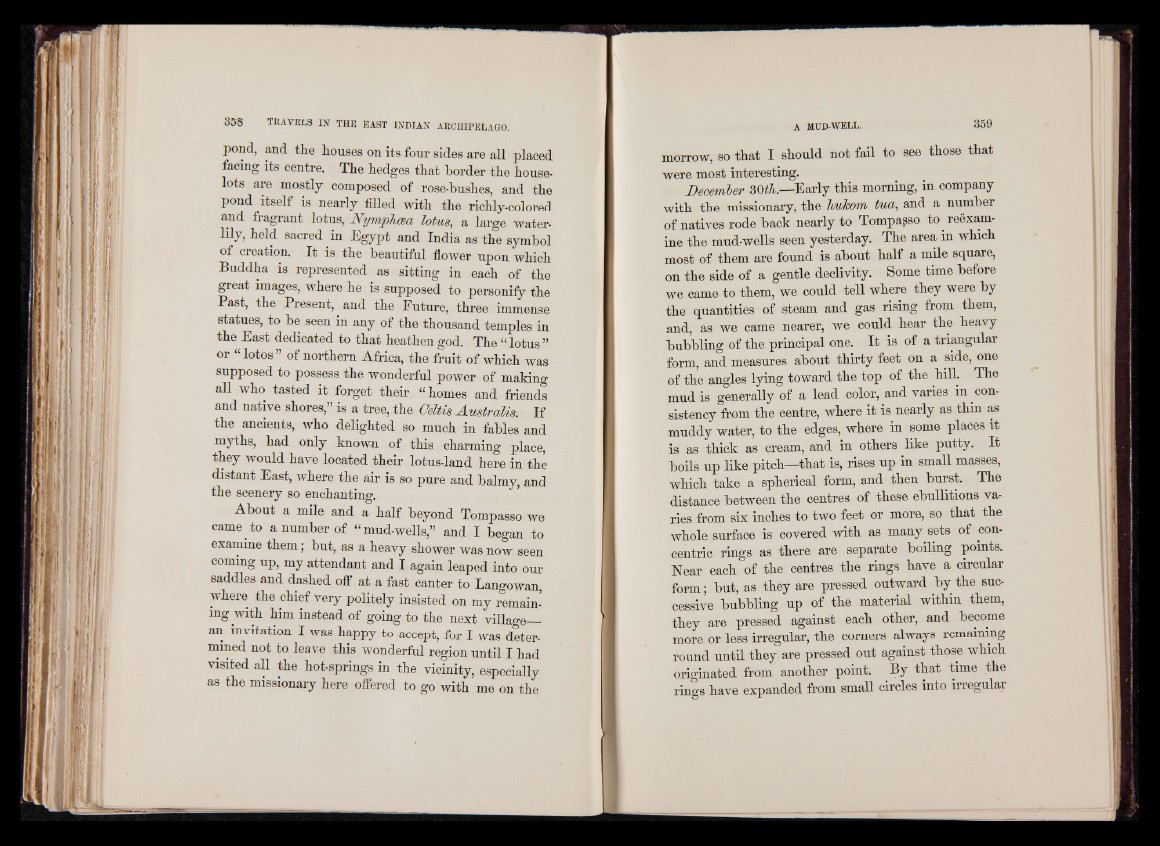
pond, and the houses on its four sides are all placed
facing its centre. The hedges that border the house-
lots are mostly composed of rose-bushes, and the
pond itself is nearly filled with the richly-colored
and fragrant lotus, Nymphcm lotus, a large water-
lily, held sacred in Egypt and India as the symbol
of cieation. It is the beautiful flower upon which
Buddha is represented as sitting in each of the
great images, where he is supposed to personify the
Past, the Present, and the Future, three immense
statues, to be seen in any of the thousand temples in
the East dedicated to that heathen god. The “ lotus”
or “ lotos” of northern Africa, the fruit of which was
supposed to possess the wonderful power of making
all who tasted it forget their “ homes and friends
and native shores,” is a tree, the Celtis Australis. If
the ancients, Who delighted so much in fables and
myths, had only known, of this charming place,
they would have located their lotus-land here in the
distant East, where the air is so pure and balmy, and
the scenery so enchanting.
About a mile and a half beyond Tompasso we
came to a number of “mud-wells,” and I began to
examine them; but, as a heavy shower was now seen
coming up, my attendant and I again leaped into our
saddles and dashed off at a fast canter to Langowan,
where the chief very politely insisted on my remaining
with him instead of going to the next village—
an invitation I was happy to accept, for I was determined
not to leave this wonderful region until I had
visited all the hot-springs in the vicinity, especially
as the missionary here offered to go with me on the
morrow, so that I should not fail to see those that
were most interesting.
December 30^.—Early this morning, in company
with the missionary, the Tiukom tnia, and a number
of natives rode back nearly to Tompasso to reexamine
the mud-wells seen yesterday. The area in which
most of them are found is about half a mile square,
on the side of a gentle declivity. Some time before
we came to them, we could tell where they were by
the quantities of steam and gas rising from them,
and, as we came nearer, we could hear the heavy
bubbling of the principal one. It is of a triangular
form, and measures about thirty feet on a side, one
of the angles lying toward the top of the hill. The
mud is generally of a lead color, and varies in co n sistency
from the centre, where it is nearly as thin as
muddy water, to the edges, where in some places it
is as thick as cream, and in others like putty. It
boils up like pitch—that is, rises up in small masses,
which take a spherical form, and then burst. The
distance between the centres of these ebullitions var
ries from six inches to two feet or more, so that the
whole surface is covered with as many sets of concentric
rings as there are separate boiling points.
Near each of the centres the rings have a circular
form; but, as they are pressed outward by the successive
bubbling up of the material within them,
they are pressed against each other, and become
more or less irregular, the corners always remaining
round until they are pressed out against those which
originated from another point. By that time the
rings have expanded from small circles into irregular